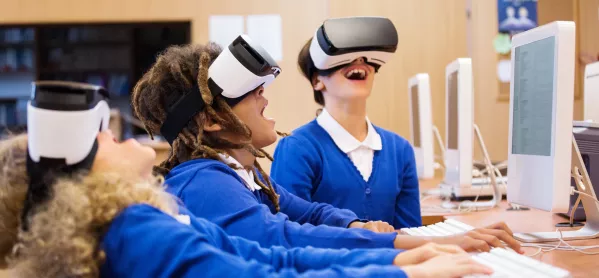Secondary school students can be very selective in their use of edtech tools.
What might look like a classroom hit soon gets left by the wayside if students don’t see the value. So how can you sell the benefits of a new piece of tech?
Ahead of lockdown, we invested in a new science tool for our key stage 4 students. It was for use outside class so its success relied on them seeing its value. We’d done our research and were confident it would be useful, but we needed to persuade our students if the investment was to pay off.
After some careful planning and with some gentle persuasion, the tool took off and we’re already reaping the rewards.
How to get students to engage with new edtech
There were five key things we did that I think helped to persuade students and make the rollout a success. If you’re planning to introduce a new edtech tool then you might like to give them a go.
1. Get the evidence
No one likes a waste of time, and students are no different. We find they are much more open to doing new things if we can show them it’s worthwhile.
One of the reasons we selected our chosen tool, Tassomai, is that it’s backed up by lots of research about the impact.
2. Sell the sizzle, not the sausage
Armed with this evidence, we ran an assembly for all our KS4 students. We talked about why we’d bought the tool and how this was essentially an investment in them.
We shared key data and explained that if they used the tool correctly, they could see the same levels of progress. We really focused on the sizzle rather than the sausage - in other words, the benefits of using the tool rather than the features.
3. Get staff sign-up first
Promoting a new edtech tool to students needs to be supported from the top. Our headteacher spoke at the assembly, sending a clear message to students that this was backed by him.
We also worked hard to ensure all the science staff were supportive. Staff had been involved in testing the solution and backed its rollout. They were committed to a sustained term-long campaign reminding students during, and at the end of, class to use the tool.
4. The carrot, not the stick
Although lots of students did try it out, we think the gamification built into the tool was what helped sustain interest. This made us realise that we needed to keep things fresh and come up with new challenges regularly.
We ran raffles during the holidays with students being entered each time they achieved their “daily goal”, meaning the more they did the more chance they had of winning.
We wanted to avoid penalising students who didn’t use the tool. The closest we got to a sanction was to set up a lunchtime club for complete non-users.
5. Make the most of the data
Most edtech provides tools for tracking students’ use and progress (but make sure you check with any supplier). I was surprised how useful this insight was and how it helped us see, at a class and individual level, how students were using the tool.
It enabled us to focus our efforts on students who seemed less engaged, but also allowed a greater personalisation for students in the revision process.
We reviewed students’ progress in departmental meetings, diagnosing the knowledge gaps across the cohort and formulating plans for addressing these gaps in targeted revision lessons.
Keep students’ needs ‘front and centre’
Students can be tough judges and edtech is no exception. Keeping their needs front and centre as you research and review edtech is a wise step.
Alongside this, bringing staff on the journey and having the full support of the SLT is essential. Finally, any edtech investment needs to prove it works and provide you with the live data to ensure you can make it successful.
Andy Darracott is deputy head of science at The Petersfield School in Hampshire

